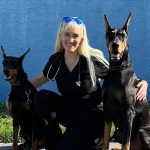
The DPCA offers a grant in support of a clinical mentored experience (for licensed vets) or a clinical externship (for 3rd and 4th year veterinary students) to work with veterinarians who perform show quality and breed standard ear crops. Grant recipients will be exposed to the surgical, anesthetic, and analgesic considerations required for this procedure. Safe and state of the art anesthesia and analgesia will be emphasized. Grant recipients will be exposed to needs for good patient after care, healing and posting for final aesthetic outcome. The standard for the Doberman Pinscher breed will be emphasized but other cropped breeds may also be seen as patients to provide as many opportunities to observe the procedure as possible for the grant recipient. Approved applicants are awarded a $1000 grant as an incentive and to help offset their expenses, travel and time required to train with their mentor as typically, the mentee must travel to the mentor’s clinic. The grant/stipend is awarded upon completion of the learning experience, as opposed to in advance. The time of each mentorship/externship is to be determined based on observation of several cropping procedures and with the input of the participating mentor. In order to have a good understanding of the ear crop procedure mentees are required to observe a minimum of 10 ear crops. All of the crops do not have to be Doberman Pinschers but the Doberman ear crop should be discussed and emphasized.
Graduate Vet Grant Application
To educate and expose interested veterinarians in the art of breed standard ear cropping at the highest level of veterinary anesthesia and analgesic care.
Student Grant Application
To educate and expose veterinary students in their 3-4th year to the art of breed standard ear cropping at the highest level of veterinary anesthesia and analgesic care.
CROP GRANT GRADUATES
The vets listed below completed the Crop Grant program having observed a minimum of ten crops with a mentoring vet, a well established practitioner with significant show crop experience.

Mark Barker
- 405-520-5846
- Barker Veterinary Surgery LLC
- Nichols Hills OK, 73116
- OK
- Phone:405-520-5846
- Practice:Barker Veterinary Surgery LLC
- Address:Nichols Hills OK, 73116
- Location:OK
Mark Barker
I want to thank the Doberman Pinscher Club of America for the experience I have had as a result of the crop and dock grant program and the veterinarians who have volunteered to participate in the program. I am grateful that my background and current involvement have led me to this opportunity.
I grew up in southwest Oklahoma in a family rooted in agriculture and the son of a veterinarian. At an early age, I became involved in 4-H and then FFA, exhibiting livestock and competing in livestock judging. I started my own herd of cattle and continue to produce show and seedstock Limousin cattle today. I continued judging in college and was on the Oklahoma State University Livestock Judging team while completing my undergraduate degree.
After completing my Doctorate of Veterinary medicine at Oklahoma State University, I joined my father?s mixed animal practice in Newcastle, Oklahoma. I was the primary surgeon at the practice and performed a variety of specialty surgeries including cosmetic dehorns and reconstructive hernia repairs on show livestock. I mentored a number of veterinary student preceptors and students of the local 4-H and FFA chapters. I have recently established my own practice in Oklahoma City, Barker Veterinary Surgery LLC, where I offer a select set of elective surgeries. Through the DPCA program I was able to mentor with well-respected veterinary ear croppers and now offer ear cropping at my practice.
My wife, Sondra, and I have always had purebred dogs and became involved in conformation shows after getting our first Irish Water Spaniel, Bayes, in 2013. Bayes was groomed, conditioned, and handled by us throughout his career and is a multi Best in Show winner. We are now enjoying presenting Bayes? offspring to the fancy. From the first two litters he has sired, we have piloted one pup to his championship and multiple group placements and another to her grand championship and multiple Best in Shows. Another pup that we co-own from the first litter is now the youngest Irish Water Spaniel to achieve her senior hunt title. We are members of the Irish Water Spaniel Club of America and I serve on the Health and Genetics and Cardiac committees. We chaired the 2021 IWSCA National Specialty in Tulsa, Oklahoma.
Thank you again to the DPCA and a special thank you to Dr. Kay Backues and Dr. Anne Midgarden for your mentorship and your continued support! I look forward to being a part of this educational process in the future!

Lauren Bessert
- 719-336-5509
- Lamar Animal Medical Center
- 1205 E. Olive St,Lamar, CO, 81052
- CO
- Phone:719-336-5509
- Practice:Lamar Animal Medical Center
- Address:1205 E. Olive St,Lamar, CO, 81052
- Location:CO
Lauren Bessert
Dr. Lauren Bessert was born and raised in rural north Texas. She received her B.S from Tarleton State University in both Biomedical Sciences and Animal Science before attending the College of Veterinary Medicine at Midwestern University in Glendale, AZ.
Since childhood, Dr. Bessert very much wanted to be a veterinarian who worked with both large and small animals. She has always loved the ?traditional? ways of doing things in veterinary practice and has worked hard in her practice to keep the ?old ways? alive in the new generation of medicine.
Ear cropping has been an interest of hers since graduation, but finding the right mentor has been proven to be a difficult task. Upon learning about the ear cropping program sponsored by DPCA, she was elated and began quickly trying to find the right mentor. She is forever grateful for the opportunity to learn from Dr. Kay Backues.

Rachel Blatchford
- 737-843-0624
- Blockhouse Creek Animal Hospital
- 2200 N. Bell Blvd,Cedar Park, TX 78613
- TX
- Phone:737-843-0624
- Practice:Blockhouse Creek Animal Hospital
- Address:2200 N. Bell Blvd,Cedar Park, TX 78613
- Location:TX
Rachel Blatchford
Dr. Blatchford earned her Bachelor?s Degree in Science from Indiana State University in 2014 and is a 2018 Graduate from Ross University School of Veterinary Medicine. Originally from Chicago, Illinois she moved to Austin, Texas in 2018 to become a member of Block House Creek Animal Hospital.
When living in Chicago she helped with working breed dogs and the police dogs her father raised and owned. She also loved doing shelter work and spending her weekends helping those fur babies in need. After moving to Texas she began her dream of working in Mixed Animal Practice. Block House Creek Animal Hospital loves to see everything and anything and it is amazing to see the things we help all the time. Throughout the years Dobermans have become one of her favorite breeds and peaked her interest in ear cropping. She has also had special interest in rehabilitation medicine and acupuncture. She received her Certificate in Acupuncture in 2021 and has been heavily incorporating integrative medicine into her daily practices.
In her spare time you can find her outside with her 2 dogs letting them play in the sunshine and chasing birds, Or cuddling her 2 cats indoors.

Will Bollinger
- 502-863-0868
- Central Kentucky Veterinary Center
- 111 Southgate Dr.,Georgetown, KY 49324
- KY
- Phone:502-863-0868
- Practice:Central Kentucky Veterinary Center
- Address:111 Southgate Dr.,Georgetown, KY 49324
- Location:KY
Will Bollinger
Dr. Bollinger is co-owner and facilities manager of CKVC. He attended the University of Kentucky for his undergraduate in 2003, and from there he went on to Auburn University to receive his Doctorate. In 2024, he earned his CCAT from North Carolina State College of Veterinary Medicine. Dr. Bollinger specializes in surgery, canine reproduction, and rehabilitation therapy. He has one dog (Remi) and one cat (Reese). Will especially enjoys boating, spending time outdoors, and hanging out with his wife, Megan, and daughter, Harper.

Amy Brent
- 940-539-0611
- B-Wise Vet Clinic
- 700 W. Walnut St,Decatur TX 76234
- TX
- Phone:940-539-0611
- Practice:B-Wise Vet Clinic
- Address:700 W. Walnut St,Decatur TX 76234
- Location:TX
Amy Brent
Dr. Amy Brent grew up in rural northeast KS. She graduated from Kansas State University College of Veterinary Medicine in 2005. She moved to Decatur Texas and has been practicing in Wise County ever since. Now working at Double X Veterinary Services, in Sunset, TX her day to day involves small animal surgery, internal medicine but primarily canine reproduction. Her interest in cropping came to a be while showing and finishing her Great Dane, Griffin.
Dr Brent began to see the differences in ear crops, and having had several clients asking her about cropping or whom she could direct them to, she wanted to learn more.
A few show breeders suggested she contact Dr Anne Midgarden in Ohio. Through Anne and after learning about the ear cropping program sponsored by the DPCA, Dr Brent found it was the perfect way to learn the procedure and see several breeds to be able to grasp the skill. That being said, she realized it?s not just a science to it, but an art as well. Noticing breed types and headpieces, she sees how it?s necessary and key to giving a pup a great ear. Giving it ears that will be proportioned to that pup as an adult and quintessential to preserving that breed type. She sees that putting a beautiful ear on a show pup is absolutely essential for its career, but that also a beautiful ear on a companion pup is equally important . Her successful reproduction part of her practice, has lead Dr. Brent to wanting to fill the need for her clients and has given her the opportunity to incorporate her interest in ear cropping to the practice. Thank you to the DPCA and Dr Anne Midgarden for the opportunity. Dr Brent lives in Decatur, TX with her husband Brad and 3 kids, Rhett, Carsynn and Reed. They have 5 dogs, 3 cats, 3 horses, several goats, Bacon the pig and Tony Llama! When not working, she enjoys watching her kids play sports, her Great Dane, Griffin compete, camping and traveling.

Sarah Burbridge
- 979-803-0791
- Watermark Vet. Hosp.
- 4511 US Hwy 290 W,Brenham, TX 77833
- TX
- Phone:979-803-0791
- Practice:Watermark Vet. Hosp.
- Address:4511 US Hwy 290 W,Brenham, TX 77833
- Location:TX
Sarah Burbridge
Dr. Sarah Burbridge received her veterinary degree from Western University of Health Sciences in California and is the owner of Watermark Veterinary Hospital, which opened in May 2023. Watermark Veterinary Hospital, WVH is a full-service small animal hospital in Brenham Texas. Dr Burbridge and her staff have a passion for canine reproduction and are committed to helping responsible canine breeders. She is a member if of the TVMA, AVMA and Society for Theriogenology. She enjoys everything about veterinary medicine, but her passion is working with, taking care of and creating a loving and positive environment her clients, patients, and employees. Dr Burbridge is excited to offer breed standard ear cropping to WVH services to further assist her breeder clients. In her spare time, she and her husband Darryl enjoy family time on the farm with her three children Rae, Charlotte and Jeremy, as well as their 2 rescue dogs CJ and Riker and bottle raised ?barn? cats Bryan, Debbie, and Leo.

Bruce Christensen
- 916-683-4029
- Kokopelli Assisted Reproductive Services
- 4325 Auburn Blvd,Sacramento CA 95841
- CA
- Phone:916-683-4029
- Practice:Kokopelli Assisted Reproductive Services
- Address:4325 Auburn Blvd,Sacramento CA 95841
- Location:CA
Bruce Christensen
Dr. Christensen graduated from Cornell University College of Veterinary Medicine in 2002. He completed a Theriogenology residency and Masters degree in Reproductive Physiology at the University of Florida in 2007. He has worked in private practice in Australia, been a university professor in Theriogenology departments at both Iowa State University and the University of California, Davis. He currently runs his own private practice in Sacramento, California, Kokopelli Assisted Reproductive Services, where he provides the only specialty canine reproduction and fertility services in Northern California. His practice strives to be the most comprehensive, reliable veterinary resource for dog breeders available. He is a Diplomate of the American College of Theriogenologists and the author of numerous journal articles and book chapters.

Stacy Curl
- 512-259-4200
- Block House Creek Animal Hosp.
- 2200 N Bell Blvd.,Cedar Park TX 78613
- TX
- Phone:512-259-4200
- Practice:Block House Creek Animal Hosp.
- Address:2200 N Bell Blvd.,Cedar Park TX 78613
- Location:TX
Stacy Curl
Doctors Marvin (Buddy) Urbanczyk and Stacy Curl have been practicing veterinary medicine for decades. Their multi-veterinarian practice sees both large and companion animals and has a strong interest in canine reproduction. Dr. Buddy has been performing pet crops since 1985 and has mentored Dr. Curl in the art of ear cropping at their clinic. Their work with preservation breeders has spurred an interest to offer their patient?s ear cropping of both pet and show quality appearance since there is a large demand for these services.
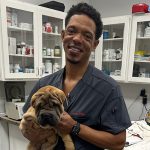
Treyton Diggs
- 504-483-2224
- Allstar Animal Clinic
- 2800 New Orleans Ave,New Orleans LA 70119
- LA
- Phone:504-483-2224
- Practice:Allstar Animal Clinic
- Address:2800 New Orleans Ave,New Orleans LA 70119
- Location:LA
Treyton Diggs
Dr. Treyton (Jai?) Diggs, is a native of Boutte, Louisiana, but was reared in Miami and Miramar, Florida. Dr. Diggs attended Hahnville High School while in Boutte and Miramar High School while in Miramar. He received his Bachelor of Science degree from Nicholls State University in Thibodaux, Louisiana in 2000. After receiving his B.S. from Nicholls, he pursued his Doctor of Veterinary Medicine at the historic Tuskegee University in Tuskegee, Alabama. As a veterinary student, he was selected and voted by his peers to be the class president. Asa student, he received the AKC CAR Scholarship twice and was awarded the Fort Dodge Best All Around Student Award during graduation. While in veterinary school, Dr. Diggs worked in the anatomy lab and the large animal clinic. After completing veterinary school in 2007, Dr. Diggs was chosen to participate in an internship in small animal medicine and surgery at California Animal Hospital Veterinary Specialty Group (Dr. Steve Ettinger and associates) in Los Angeles, California. During his internship, Dr. Diggs was extensively trained by top Board-Certified Veterinary Specialists in Small Animal Internal Medicine, Cardiology, Emergency and Critical Care, Neurology, Neurosurgery, Surgery, Dentistry, and Radiology. After completing his internship, Dr. Diggs returned home to Louisiana to the VCA Causeway Animal Hospital family. After working at VCA Causeway Animal Hospital for 4.5 years, he founded Allstar Animal Clinic in 2013, a clinic that has an interest in soft tissue and orthopedic surgery and canine reproduction. Dr. Diggs is a Dog Fancier and Field Trial Judge. He has judged the AKC SPO National Championship, AKC Gundog Brace Championship, and the AKC SPO Two Couple Pack Championship. He has won the AKC SPO National Championship in 2015 13? Male Class (McDaniel?s Running Like Forest), trained and conditioned 12 Field Champions that he owned, and judged over 130 AKC licensed trials. Dr. Diggs has also served and worked in various Dog Fancier and Field Trial leadership roles that are inclusive of, but not limited to, AKC SPO Championship President, AKC SPO Championship Treasurer, Southern States Beagle Gundog Association Field Trial Secretary, Deep South Gundog President, and President of Westbank Beagle Club
On a personal note, Dr. Diggs is engaged to his fianc? Bernadette and has three lovely children, TreytonDiggs II, Milan Diggs, and Italia Diggs. When time permits, he coaches his children in sports, fishes, trains his beagles to compete in AKC sanctioned field trials, or simply rides into the sunset on his favorite horse, Joe.

Jonathan Dumas
- jonathandumas@student.rossu.edu
- https://www.shermanoaksveterinarygroup.com/
- Sherman Oaks Veterinary Group
- 13624 Moorpark Street,Sherman Oaks, CA 91423
- CA
- Email:jonathandumas@student.rossu.edu
- Website:https://www.shermanoaksveterinarygroup.com/
- Practice:Sherman Oaks Veterinary Group
- Address:13624 Moorpark Street,Sherman Oaks, CA 91423
- Location:CA
Jonathan Dumas
Dr. Jonathan Dumas is a native of Miami, FL and a graduate of Ross University?s School of Veterinary Medicine. Dr. Dumas completed his clinical training at Michigan State University, and holds a BsC in Animal Science from the University of Florida and Masters Degrees in Agricultural & Extension Education and International Agriculture & Development from the Pennsylvania State University.
Dr. Dumas has a total of ten years of federal service where he worked for the United States Department of Agriculture as an Animal Health Technician, Program Analyst and Policy Analyst respectively.
Dr. Dumas? hobbies including traveling, weightlifting, hiking and running, and in his down time he prioritizes quality time with family and his fur babies.

Hillary Faas
- 612-781-6941
- Pet Central Animal Hosp.
- 2700 Central Ave. NE,Minneapolis MN 55418
- MN
- Phone:612-781-6941
- Practice:Pet Central Animal Hosp.
- Address:2700 Central Ave. NE,Minneapolis MN 55418
- Location:MN
Hillary Faas
Dr. Hilary Faas earned her undergraduate degree from the University of Minnesota and her veterinary degree from Ross University in 2012. She has worked at Pet Central Animal Hospital in Minneapolis, MN since 2000 as a technician, came back there after vet school and now is their medical director.
She has worked with Dr. Nelson to perform ear crops on mostly bully breeds, but wanted to expand her knowledge base and finished her externship program under Dr. Janine Anderson.
Dr. Nelson has performed ear crops for over 50 years and Dr. Anderson has more experience with the finer details of show crops. Dr. Faas hopes to combine her new knowledge base and continue to provide high quality crops upholding the standards and artistic beauty of these special breeds.

Paige Fawcett
- 316-687-0136
- East Douglas Vet Clinic
- 8118 East Douglas Ave Ste 109,Wichita KS 67206
- KS
- Phone:316-687-0136
- Practice:East Douglas Vet Clinic
- Address:8118 East Douglas Ave Ste 109,Wichita KS 67206
- Location:KS
Paige Fawcett
My name is Dr. Paige Fawcett. I graduated from Ross University in 2021. I have been working in the veterinary field for 16 years. I started as an assistant and worked my way to becoming a vet. I have dreams of owning my own clinic and making decisions that are best suited for my patients. I am a mother of three young children, a wife to a dog trainer and never get to enjoy alone time. I enjoy surgery and realize that there is a need for veterinarians to continue with the art of ear cropping. I currently practice in Kansas and have a strong interest in surgery, client relationships and behavioral training. I am hoping to continue learning the skills of cropping and start offering this in my facility in the next few months. I am incredibly thankful for the opportunity that The Doberman Pinscher Club of America is offering students and vets. Without this program, it is very unlikely I would have ever thought to attempt ear cropping. They provided a safe place for me to ask lots of questions, see the procedure done repetitively and properly. I look forward to meeting you and providing care for your loved pet.
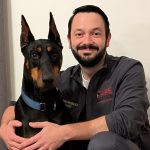
Jacob Froehlich
- hospital@capevethospital.com
- 609-465-9326
- Cape Veterinary Hospital
- 305 Swainton Goshen Road,Cape May Courthouse NJ 08210
- NJ
- Email:hospital@capevethospital.com
- Phone:609-465-9326
- Practice:Cape Veterinary Hospital
- Address:305 Swainton Goshen Road,Cape May Courthouse NJ 08210
- Location:NJ
Jacob Froehlich
Dr. Jacob Froehlich graduated summa cum laude from North Dakota State University, studying vertebrate zoology in 2009. He went onto veterinary school at Cummings School of Veterinary Medicine at Tufts University in Massachusetts. Upon graduation, he started his career in regulatory medicine with the Food and Drug Administration before transitioning back to clinical medicine. Dr. Froehlich has experience in both small and large animal medicine and surgery. In his free time, he enjoys dog, cat, and livestock shows, Star Wars AND Star Trek, Yellowstone, and fine dining. He loves to spend time at home with his partner, James, and his menagerie of four dogs (Doberman Pinscher – cropped and docked!, German Shepherd Dog, French Bulldog, and Norwegian Elkhound mix), three cats (Domestic Shorthair, Siamese, and Havana Brown), a chinchilla, and three ruminants (two goats and one sheep).

Kelly Garrett
- 978-512-1092
- Healing Hands Vet. Services
- 311 Hill Rd,Groton MA 01450
- MA
- Phone:978-512-1092
- Practice:Healing Hands Vet. Services
- Address:311 Hill Rd,Groton MA 01450
- Location:MA
Kelly Garrett
I am a graduate of Mississippi State College of Veterinary Medicine and practice in MA and RI. In addition to conventional veterinary medicine, I am also certified in small animal Acupuncture and Chinese herbs from the Chi Institute in Florida. My practice is heavily surgical including a large amount of dentistry and soft tissue surgery but I also make house calls for the geriatric patient consisting of pain management, laser, acupuncture, hospice, and end of life care.
I only recently became involved with the competitive purebred dog world in 2020 when I acquired my first show dog, a Rottweiler. I never thought I would be as interested in the preservation of breed standards and the entire fancy as I have become. I was naturally excited to learn that I could have the opportunity to learn the skill of surgical ear cropping for purposes of maintaining a historic breed standard and breed image. I am extremely grateful for this learning opportunity and look forward to when I am able to offer these surgical services on my own.

Christine Gerst
- 916-987-2055
- Orangevale Veterinary Hospital
- 6248 Main Ave Unit D,Orangevale, CA 95662
- CA
- Phone:916-987-2055
- Practice:Orangevale Veterinary Hospital
- Address:6248 Main Ave Unit D,Orangevale, CA 95662
- Location:CA
Christine Gerst
Dr Christine Gerst was born and raised in Illinois. She is a 2010 graduate of Purdue University College of Veterinary Medicine. Dr Gerst is the Medical Director at Orangevale Veterinary Hospital in Orangevale, CA. Her practice focuses on breeding/reproduction but also provides general GP care. Outside of work, Dr Gerst stays busy with her husband (Kevin), 3 children (twins Harper and Connor & their younger brother Hudson), as well as 4 dogs, 4 cats, 2 horses and 2 goats.
Dr. Gerst is actively cropping since completing her mentorship.

Samantha Green
- 618-931-0101
- Creekwood Animal Hospital
- 3818 Pontoon Rd,Pontoon Beach, IL 62040
- IL
- Phone:618-931-0101
- Practice:Creekwood Animal Hospital
- Address:3818 Pontoon Rd,Pontoon Beach, IL 62040
- Location:IL
Samantha Green
Dr. Samantha Green is a small animal veterinarian in the St. Louis area (on the IL side of the river). She completed her undergraduate studies at Southern Illinois University and graduated from the University of Missouri College of Veterinary Medicine in 2020. Dr. Green has shown a strong interest in canine performance sports for several years and is working towards the goal of competing in Mondioring. She takes pride in supporting those striving to preserve the breeds we love and allowing the dogs to do the work they were bred to do. Dr. Green is excited to offer ear cropping services to her clients and looks forward to expanding her network of passionate dog owners, breeders, and handlers.

Rachel Hack
- 636-462-7297
- Falls Veterinary Care
- 91 West Highway U,Troy MO 63379
- MO
- Phone:636-462-7297
- Practice:Falls Veterinary Care
- Address:91 West Highway U,Troy MO 63379
- Location:MO
Rachel Hack
I am a 2016 graduate of Ross University. I have been in the performance dog show world for over 15 years and got my first cropped breed (a natural Beauceron) two years ago. I started competing with her in conformation and became enamored of well done crops. I hope to eventually own my own business and offer cropping.

Lori Hunt
- 330-659-0712
- Cuyahoga Valley Veterinary Clinic
- 3850 Brecksville Rd,Richfield OH 44286
- OH
- Phone:330-659-0712
- Practice:Cuyahoga Valley Veterinary Clinic
- Address:3850 Brecksville Rd,Richfield OH 44286
- Location:OH
Lori Hunt
I am a practicing small animal & reproduction veterinarian in Westlake, Ohio, at Center West Animal Hospital. I have owned and loved french bulldogs since 1999 and I whelped my first litter in 2004. Since that time I have bred close to 50 champions, close to 20 Grand champions, including several at the higher levels. I have produced roughly two dozen FBDCA Register of Merit dogs, 4 OFA Champions of Health and many FBDCA VOM dogs. French bulldogs I have bred compete in lure coursing, barn hunt, scent work, agility, rally and obedience. Many of them are competing in these avenues at the highest levels. My kennel, Assisi has upwards of 100+ performance titled French Bulldogs. I am a member of the French Bulldog Club of America since 2000, have chaired many committees, authored dozens of breed specific articles published world wide. I am an AKC licensed French Bulldog judge. I judge predominantly specialties across the USA and internationally, including Australia. I have been honored to judge the FBDCA Breeders Class in 2010, the FBDCA Top Twenty in 2011, the FBDCA Puppy and Veteran Sweepstakes in 2016 and most recently, I judged the FBDCA National speciality in 2022.
I have owned, shown and loved dogs in a few other breeds; American Cocker Spaniel, Spinone Italiano, Weimaraners, and Briards, including a past #1 Briard/#7 Herding Dog.
Within the last decade, I have enjoyed adding Maine Coons to my home and have the beginnings of a small in home cattery. Several of my cats also attend CFA shows.
My personal life with purebred animals flows quite well into my professional life as a reproduction veterinarian. I have been doing all things repro since I graduated from The Ohio State University in 2003 with top honors and awards in Theriogenology. I have been doing ear cropping for several breeds for many years, such as Briards and Bouviers. I wanted to expand my skills to other breeds as I see it easily becoming a lost art and it is important to support the purebred dog world and it?s needs. I spent time studying with Dr. Anne Midgarden to learn the more difficult crops, such as Dobermans, Great Danes and Boxers. It was a wonderful experience and hope it will add a great service to my wonderful breeder clients and those who may be looking for someone to do crops for them.
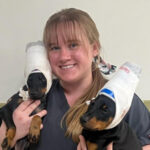
Ashley Intihar
- Intern at Kansas State University
- KS
- Practice:Intern at Kansas State University
- Location:KS
Ashley Intihar
Hello, my name is Ashley Intihar and I?m a fourth-year veterinary student at Oklahoma State University. I continuously aim to advance my education in all fields of veterinary medicine, hence my interest in the DPCA Breed Standard Ear Cropping Veterinary Student Externship Program. Through this externship, I?ve learned hands-on about breed standard ear cropping and how it’s accompanied by high quality veterinary anesthesia/analgesic care with an emphasis on after care, healing, and posting. Given that this is not a procedure taught in veterinary school, this experience was truly enlightening. The DPCA Crop Grant program has debunked many of the common misconceptions I?ve heard about ear cropping in the past and I?m now equipped with the proper knowledge to be able educate others about the procedure. I encourage other veterinary students to participate in this program so they too can obtain accurate information about ear cropping through hands-on experience and mentorship. Lastly, thank you to the DPCA and Dr. Kay Backues for providing me with this unique, eye-opening opportunity.
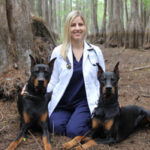
Brooke Kiernan
- 727-896-7127
- Animal Medical Hospital
- 2540 30th Ave N,St. Petersburg, FL 33713
- FL
- Phone:727-896-7127
- Practice:Animal Medical Hospital
- Address:2540 30th Ave N,St. Petersburg, FL 33713
- Location:FL
Brooke Kiernan
Dr. Brooke Kiernan is a 2020 graduate from the University of Florida College of Veterinary Medicine. Dr. Kiernan received her undergraduate degree in Animal Sciences from the University of Florida, graduating with honors. During her time in Gainesville, her studies focused on small animal, exotic, and equine practice.
Dr. Kiernan served as president of the student association for veterinary surgery and president of the veterinary business management association. She also received certificates in shelter medicine and veterinary business management.
Dr. Kiernan has always had a love for Dobermans. After doing the DPCA Mentorship, she looks forward to be able to offer ear cropping at her clinic.
In her spare time, Dr. Kiernan enjoys long-distance running, cycling, and spending time with her family and two Dobermans.
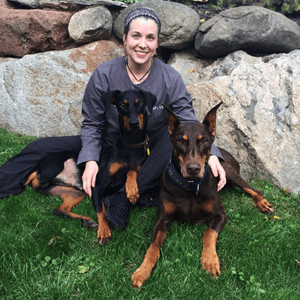
Liz Kismartoni
- 941-893-1500
- Veterinary Surgery Center of Sarasota
- 8033 Cooper Creek Blvd, #101,University Park, FL 34201
- FL
- Phone:941-893-1500
- Practice:Veterinary Surgery Center of Sarasota
- Address:8033 Cooper Creek Blvd, #101,University Park, FL 34201
- Location:FL
Liz Kismartoni
Dr. Liv earned her Bachelor?s and Master?s degree in Public Health from the University of Illinois at Chicago. She graduated from the University of Wisconsin?s Veterinary School in 2010.
As a former professional dog trainer, and competitor in dog sports, she followed her passion and earned certifications in veterinary acupuncture at the Chi Institute, physical rehabilitation (similar to physical therapy for humans), and veterinary spinal manipulative therapy (animal chiropractic). She also serves in the Air Force Reserves.
Working and sporting dog owners seek Dr. Liv out to help keep their dogs in top performance levels. Dr Kismartoni is a recent graduate of the DPCA Crop Externship Program and is actively cropping at her clinic, West Coast Veterinary Center in Sarasota, Florida.
Dr. Liv is active in the community and works very closely with responsible Doberman breeders.

Justine Kwiecinski
- Justine.kwiecinski@thrivepet.com
- South Atlanta Veterinary Emergency and Surgery
- 1090 Highway 54 East,Fayetteville GA 30214
- GA
- Email:Justine.kwiecinski@thrivepet.com
- Practice:South Atlanta Veterinary Emergency and Surgery
- Address:1090 Highway 54 East,Fayetteville GA 30214
- Location:GA
Justine Kwiecinski
Dr. Kwiecinski earned her Bachelor?s degree in Companion Animal Science from Rutgers University in 2018 and graduated from Ross University School of Veterinary Medicine in January of 2022 after completing her clinical year at Auburn University. Dr. Kwiecinski currently practices in Georgia and is grateful to have completed the ear cropping program after learning proper technique from Dr. Larry Branch. Dr. Kwiecinski has a long time love for Dobermans and recently adopted her first Doberman, Huckleberry, who has taught her a lot about the cropping process first hand. The techniques she has acquired through this program will be provided by Northside Animal Hospital in Columbus, Georgia, and two of the current five veterinarians will be offering this service.
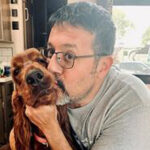
Claudio Lagoa
- 907-235-9338
- Chugach Animal Clinic
- 36633 Old Sterling Hwy,Anchor Point, AK 99556
- AK
- Phone:907-235-9338
- Practice:Chugach Animal Clinic
- Address:36633 Old Sterling Hwy,Anchor Point, AK 99556
- Location:AK
Claudio Lagoa
I was practically born in a whelping box. My journey through the field of veterinary medicine has been marked by a deep love for animals, for the medical sciences and respect for nature. I believe in compassionate, state of the art, yet objective veterinary care. After obtaining my DVM degree and working as a practitioner for a couple years, I developed a strong affinity for emergency and critical care medicine, which led me to transition into a research role at top human medical schools, where I worked in collaboration with internationally recognized human surgeons, emergency and critical care physicians. My time in cutting-edge areas of human medicine developed in me a profound appreciation for the interconnectedness of human and animal health in addition to the opportunity to gain valuable insights into the scientific and therapeutic aspects of the medical sciences.
Later, upon returning to the veterinary field, I focused predominantly on small animal emergency and critical care and worked alongside outstanding board-certified veterinary specialists. As my journey progressed, I continued to broaden my scope of veterinary care, including general practice, wellness/preventative medicine, canine reproduction and behavior. As a result, I have developed extensive skills in delivering a broad scope of interventions to veterinary patients.
My life-long involvement with dogs makes me greatly appreciative of the importance of pure-bred dogs, their history and function. Purebreds are purpose-bred dogs! The characteristics that make each of these dogs unique also help them perform specialized functions for which they were bred. The physical appearance of these pure-bred dogs clearly illustrates this and is also an important part of each breed?s development and history. Ear cropping is an elective surgery currently implemented in approximately 20 dog breeds, including Dobermans, Great Danes, Boxers, Schnauzers, Corsos and others. Many owners of specific breeds wish to maintain their dog?s historic practical function by having their puppy?s ears cropped, tails docked, or dewclaws removed. While some people unfamiliar with the breeds believe that these practices are purely aesthetic and question their necessity, these procedures often actually enhance the dog?s ability to perform the tasks it is meant to do, and in many cases protect the dog from serious injury in life.
Unfortunately, the politization and groundless criticism directed at these veterinary procedures by animal rights groups have negatively impacted the way our society perceives ear cropping, tail docking and declaw surgeries in dogs. Consequently, nowadays, very few veterinarians comprehend the importance of these procedures. Furthermore, the surgical skills necessary to perform them correctly have been lost. This problem has also encouraged the same procedures to be performed on the black market, under unsafe, deplorable conditions by unqualified individuals.
By a stroke of luck, I met Dr. Anne Platt in Alaska, and she informed me of the DPCA?s Crop Externship Program. Through Dr. Platt, I am receiving outstanding mentorship on how to best harness the ear cropping skills for different breeds ? all of this under safe, state-of-the-art veterinary care.
The ultimate goals: dispel the myth of animal cruelty for these procedures while preserving breed standard and function.
Dr. Lagoa lives in Anchor Point, Kenai Peninsula (Alaska) with his wife, daughter and 3 rollicking AKC champion Irish Setters. He is the owner and solo practitioner at Chugach Animal Clinic.

Aurora Lambert
- 406-752-1330
- Ashley Creek Animal Clinic
- 3251 US Hwy 93 S ,Kalispell MT 59901
- MT
- Phone:406-752-1330
- Practice:Ashley Creek Animal Clinic
- Address:3251 US Hwy 93 S ,Kalispell MT 59901
- Location:MT
Aurora Lambert
Dr. Aurora Lambert earned both her Bachelor’s and Master’s degrees in Animal and Veterinary Science from the University of Wyoming before completing her Doctor of Veterinary Medicine at St. George’s University in 2016. She finished her clinical training at Oregon State University and began her career in emergency and critical care at a busy hospital in Missoula, Montana. In 2017, she relocated to the Flathead Valley and in 2020 purchased Ashley Creek Animal Clinic, a long-standing small animal general practice. Dr. Lambert has a special professional interest in canine reproduction and surgery. Outside of practice, she enjoys training and competing with her Boxers in AKC
sports, including agility, obedience, and conformation.
With early mentorship from Dr. Paul Schaumberg in Missoula, Dr. Lambert began performing ear crops in 2018 and has since provided this service for all breeds. Thanks to the DPCA’s Grant Program, in 2025 Dr Lambert was thrilled to be able to refine those skills and learn to add that “special touch” to her show crops, after mentorship with the renowned ear crop specialist Dr Anne Midgarden in Ohio.
Dr. Lambert continues to offer ear crop services at Ashley Creek Animal Clinic in Northwest Montana, which will be relocating to a newly renovated 7,000-square-foot facility by winter of 2025.

Maryanne Mack
- drmack@feedinghillsvet.com
- 413-786-8828
- Feeding Hills Vet. Clinic
- 1194 Springfield St,Feeding Hills, MA 01030
- MA
- Email:drmack@feedinghillsvet.com
- Phone:413-786-8828
- Practice:Feeding Hills Vet. Clinic
- Address:1194 Springfield St,Feeding Hills, MA 01030
- Location:MA
Maryanne Mack
Dr Maryanne Mack is a 2016 graduate of the Cummings School of Veterinary Medicine at Tufts University. She has been involved in the preservation, showing and breeding of purebred dogs since she was a young child. She is an AKC Breeder of Merit and has bred and presented the two top winning Boston Terrier bitches in breed history, multiple Best in Show, Best in Specialty Show, and Boston Terrier of the Year Winners. She has presented and developed dogs of many breeds, including terriers, working dogs, toy dogs, and sporting dogs.
Dr Mack is strongly invested in the relationship between veterinarian and breeder; with a focus on reproductive medicine and the needs of the working and show dog. She loves a beautiful ear crop and strongly supports the preservation of this art.
Dr Mack is located in Feeding Hills, MA

Carol Margolis
- 631-923-2530
- Gold Coast Center for Veterinary Care
- 770 West Jericho Turnpike,Huntington NY 11743
- NY
- Phone:631-923-2530
- Practice:Gold Coast Center for Veterinary Care
- Address:770 West Jericho Turnpike,Huntington NY 11743
- Location:NY
Carol Margolis
Originally from East Setauket Long Island, I attended SUNY Stonybrook for my undergraduate degree in General Biology, with the goal of pursuing a veterinary career. During high school I became interested in dog breeding, and during college began my first dog breeding experiences through breeder mentorship. During this time I also rode Hunter/Jumper for the SUNY Stony Brook Equestrian team, continuing my life long love of horsemanship. Nothing beats horses and dogs!
In 2012, I graduated from Ross University School of Veterinary Medicine, having spent my final clinical year at Tuft?s Cummings School of Veterinary Medicine. Shortly after graduation, I was working at a high volume private practice in a low-income area in the Bronx, where I had my first exposure to pet ear cropping.
2016, I completed the AKC/Theriogenology Foundation sponsored Residency in Small Animal Theriogenology at the University of Pennsylvania, where I remained for 3 years working as a Lecturer for Reproduction, Pediatrics, and Medical Genetics in addition to managing the hospital clinic rotation and relevant cases.
In 2019 I went into private practice at Gold Coast Center for Veterinary Care, a Specialty Medical Hospital and Referral center where I have continued to work as a Theriogenologist (Reproduction and Neonatal/Pediatrics). In order to better serve my local breeder community where there is a large number of those with prior experience coming up on retirement, I feel it is imperative that the skills required for proper breed specific management be obtained and also passed along.
I want to thank the DPCA Crop Grant for providing the opportunity to learn from the best!
I look forward to having you as a future client.

Christine Marlowe
- 660-342-2095
- Emprise Mobile Vet Services
- ,Anchorage, AL
- AK
- Phone:660-342-2095
- Practice:Emprise Mobile Vet Services
- Address:,Anchorage, AL
- Location:AK
Christine Marlowe
I grew up in the Midwest in Wisconsin and Missouri. I attended undergraduate college in St Paul MN. I then graduated from the University of Missouri College of Veterinary Medicine in 2011. After graduation I worked in a mixed animal practice in northern Missouri for two years before starting my own mixed animal practice in Memphis, MO. After a few years the opportunity to move to Alaska became available and I brought my practice to the Kenai Peninsula. My practice here is entirely mobile offering routine services. I have two girls and family that lives locally on the Kenai Peninsula. I had a Doberman, named Nero, for several years, including during the move to Alaska.
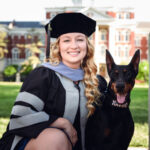
Melanie Matthews
- mmatthewsdvm@gmail.com
- Veterinary Emergency Group
- 201 Tarrytown Rd,White Plains NY 10607
- NY
- Email:mmatthewsdvm@gmail.com
- Practice:Veterinary Emergency Group
- Address:201 Tarrytown Rd,White Plains NY 10607
- Location:NY
Melanie Matthews
Dr. Melanie Matthews graduated from University of Missouri in 2022. She works as a small animal emergency doctor in White Plains, NY.
She has a strong interest in canine working medicine. Her love for Dobermans started in 2020 when she adopted her first dobie puppy. From there she dove deep into the Doberman world. Her goal is to one day own her own practice that offers ear cropping, and to enter the show world with her next puppy.

Linda Meakin
- 513-832-0132
- Breed All About It
- Cincinnati, OH 45255
- OH
- Phone:513-832-0132
- Practice:Breed All About It
- Address:Cincinnati, OH 45255
- Location:OH
Linda Meakin
Dr Linda Meakin is a 1989 graduate of the Ohio State College of Veterinary Medicine. She received her B.S. in Biology from the John Carroll University in Cleveland, and went on to receive her Doctor of Nursing (ND) from Frances Payne Bolton School of Nursing at Case Western University in Cleveland, Ohio.
She worked on a Neonatal Intensive Care Unit (NICU) stepdown unit for one year and decided that veterinary medicine was still her first love. She took a few needed pre-requisites and applied to the Ohio State Veterinary College and was accepted. She uses her knowledge from caring for preemie babies in her practice of neonatal medicine in puppies.
After practicing for 30 years in general medicine at All Creatures Animal Hospital in Cincinnati, she decided to open up a reproduction/pediatric clinic. Dr Linda has been breeding Puliks for over 30 years. She got into showing her Puliks about 15 years ago, and has more recently begun showing her Komondor, Pumi and Kuvasz. She has been invited to Westminster multiple times, and more recently was invited to Crufts Dog Show with her Komondorok, Big Al.
After being asked many times whether she did ear cropping, she decided to take the DPCA Crop Grant Mentorship course. She is excited to now offer ear cropping services at her practice since completing the externship. Her practice, Breed All About It, is in Cincinnati OH.

Mary Moon
- 678-794-3057
- Moon Mobile Veterinary Service
- Center Hill Church Rd,Loganville GA 30052
- GA
- Phone:678-794-3057
- Practice:Moon Mobile Veterinary Service
- Address:Center Hill Church Rd,Loganville GA 30052
- Location:GA
Mary Moon
Dr. Moon is a 2006 graduate of Auburn University College of Veterinary Medicine. She grew up in rural South Carolina on a small family farm. She enjoys working with a variety of animals from farm animals to dogs and cats in veterinary practice. She is certified in veterinary acupuncture and is a certified equine rehabilitation practitioner from the Chi Institute in Florida.
A lifelong Boxer owner and breeder in recent years, she feels learning to correctly crop is extremely important. It is an art that is rapidly being lost and there are no textbooks or readily available information sources to consult for information on the subject. Internship opportunities allow veterinarians interested in cropping the opportunity to learn cropping, but also learn about posting, and techniques to reduce the incidence of problems.
Dr. Moon lives in central GA on a farm and raises dairy goats and beef cattle with her husband. She enjoys sporting events with her dogs, horseback riding and spending time with family outside of practicing veterinary medicine. Since completing the DPCA CG Mentorship, she has continued to mentor with vets experienced in long eared show crops, and has formed an LLC. As a relief vet, she has arranged to offer cropping services at several practices in her area. She is in the process of purchasing a mobile mixed animal trailer being offered for sale by a retiring colleague, and eventually plans to open a practice of her own.

Rebekah Mullins
- 423-341-4319
- Covington, GA 30014
- GA
- Phone:423-341-4319
- Address:Covington, GA 30014
- Location:GA
Rebekah Mullins
Dr Rebekah Mullins completed veterinary school at the University of Tennessee in 2011. Throughout her career the importance of good breeding programs has become more and more apparent. With that increased interest it was only natural to pay more attention to the show ring, breed standards, and of course ear cropping. She has been interested in learning the skill of ear cropping for several years but has struggled to find good resources and publications on the topic and connect with a knowledgeable mentor in her area. Thankfully the DPCA was able to provide this opportunity. She is looking forward to supporting breeders and owners throughout the ear cropping process and is very grateful to have had this amazing opportunity. She is pictured with her Crop Mentor, Larry Branch, DVM.
Gwen Myers
Dr. Gwen Myers received her veterinary degree from the Virginia-Maryland College of Veterinary Medicine, where she also acquired her first Doberman?a breed that quickly became a lifelong passion. Her involvement in the Doberman community expanded into competing in conformation, obedience, and agility events. After graduating, Dr. Myers worked in small animal general practice and emergency medicine before completing a residency in zoological medicine at the Columbus Zoo and Aquarium. She remained at the zoo for ten years as Associate Veterinarian, during which time she also achieved notable success as a breeder-owner-handler in the Doberman show world and worked part-time as an Emergency Veterinarian at MedVet.
For the past decade, Dr. Myers has served as the Chief of Animal Health at Zoo Miami, while continuing to actively breed and show Dobermans. She has completed advanced training in canine acupuncture through the Chi University and regularly provides relief services at local veterinary clinics. It was through this work that she recognized a growing need for skilled, ethical ear cropping procedures. In response, she pursued further specialized training under Dr. Renato Mendez through the DPCA Crop Grant program, helping to preserve and refine this important aspect of breed care.
Dr. Myers is located in Miami, FL, and can be reached at thepengwen@hotmail.com.

Julie Oghigian
- 406-522-9491
- Alpenglow Veterinary Hospital
- 2401 Riata Road,Bozeman MT 59718
- MT
- Phone:406-522-9491
- Practice:Alpenglow Veterinary Hospital
- Address:2401 Riata Road,Bozeman MT 59718
- Location:MT
Julie Oghigian
Dr. Julie Oghigian has been working in the veterinary profession for well over 25 years, with over 20 of those in practice as a small animal veterinarian. She graduated from Washington State University?s College of Veterinary Medicine and chose to pursue a prestigious rotating internship at the nation?s third largest small animal referral hospital and after working for others for many years, has owned her own veterinary hospital in Bozeman, MT with a special emphasis on reproduction, orthopedics, and rehabilitation since 2020.
Dr. Julie has a strong interest in canine and feline reproduction, canine sports medicine and rehabilitation, feline medicine/surgery, dentistry, Traditional Chinese Medicine (TCM), zoo animal and wildlife medicine/rehabilitation. Dr. Julie is also a Certified Veterinary Acupuncturist through the International Veterinary Acupuncture Society and is working (in all of her spare time) toward certification in canine rehabilitation. She was a Founding Fellow of the International Association of Cat Doctors and is a member of a multitude of veterinary and professional associations as well as an executive director of the Montana Veterinary Medical Association. Dr. Julie was the staff doctor at Guide Dogs of America for over 4.5 years and was very excited to see the advancements and growth of the GDA veterinary program during that period. She has also been an active board member of several purebred dog breed clubs.
Outside of work, Dr. Julie loves spending time with her husband and their two young daughters, friends, and family, and enjoys competing with her AKC champion Labrador retrievers in the AKC conformation ring, AKC and HRC hunt tests, obedience, rally, and other performance venues. Dr. Julie has also been a veterinary columnist in the world-renown Labrador Quarterly magazine. She also enjoys movies, books, photography, SCUBA diving, art, and the outdoors- hiking, camping, fishing, shooting, gardening, rock-climbing, and exploring the wilderness. While, with her busy life, she appreciates her chosen ?wash and wear? breed, she is excited to be able to provide the purebred and working dog communities with humane yet artful cropping procedures. She was mentored by the renowned Dr. Ann Platt.
Janice Park
Dr. Janice Y. Park is a veterinarian at The Ohio State University who is currently fulfilling a joint residency/PhD in Anatomic Pathology. She graduated from Texas A&M University?s College of Veterinary Medicine, during which her enthusiasm for dog shows and breed preservation began. Through her journey of showing dogs and working with a wide range of breeds in her career, Dr. Park has become a strong advocate for the dog fancy and is in the process of training in the art of ear cropping in hopes of giving back to the breed preservationist community. She equally aims to serve as a liaison and promote mutuality between the general public and those involved in showing/breeding dogs. In her spare time, she enjoys spending time with her loving Standard Schnauzer, biking, exploring international cuisines, and learning new craft hobbies.
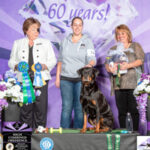
Kate Player
- 630-554-1080
- Bristol Vet Clinic
- 2271 Orchard Rd.,Oswego, IL 60543
- IL
- Phone:630-554-1080
- Practice:Bristol Vet Clinic
- Address:2271 Orchard Rd.,Oswego, IL 60543
- Location:IL
Kate Player
Kate Player, D.V.M. attended the University of Illinois, Urbana and earned her Bachelor of Science in Animal Sciences, Biotechnology, and Pre-Veterinary Medicine in 2007 and then her Doctor of Veterinary Medicine in 2011.
After graduation from veterinary school, Dr. Player worked in a variety of small animal general practices and a practice with a focus and heavy caseload in canine theriogenology. She then left traditional practice and transitioned full time to general practice relief work and found a passion for high quality/high volume spay/neuter (HQHVSN) and shelter medicine. She opened her first mobile practice in 2017 where she continued her work in canine reproduction on the side but provided general practice relief veterinary services, minor house call services, and acted primarily as a HQHVSN veterinarian with non-profits and shelters local to her home. Through this work, Dr. Player has become extremely proficient with pediatric surgery and anesthesia. She has performed about 40,000 spay/neuter surgeries at this point in her career and has done countless other surgical procedures over the years.
After witnessing so many different practice cultures and seeing the desperate need, Dr. Player decided to tackle the next adventure in veterinary medicine: She opened her first bricks and mortar veterinary clinic in January 2024! The clinic is named after her heart dog and the foundation of her breeding program. Bristol Veterinary Clinic, located in Oswego, Illinois, is a small animal general practice with a special interest in comprehensive canine (and some feline) theriogenology, neonatal, and pediatric care.
Ever since, as a very young child, she assisted her veterinarian mentor with docking tails on his many litters of Jack Russel Terrier puppies, Dr. Player had a strong desire to dock tails and crop ears properly and aesthetically. She learned the art of tail docks of a variety of lengths as a young veterinarian, but she never had the opportunity to learn the dying art of ear cropping until the DPCA Crop Grant program became available! Immediately upon learning about the unique opportunity, Dr. Player applied and was admitted to the program. She completed her mentorship with Dr. Midgarden in Ohio and has even gone back for further instruction to perfect this artful surgical procedure
When not working, you can find Dr. Player riding her bicycle, hanging out with her husband and family, or playing with her dogs. She has owned Rottweilers since 1987. She started showing conformation in 2005, Rally in 2013 and Obedience in 2015. She had her first litter in 2013 and just confirmed pregnancy on her fourth generation and eighth litter due in April 2024. She is active in the breed and is a member of the American Rottweiler Club Health Committee.
As a breeder herself, she understands the nuanced difficulties many breeders face raising litters, choosing the right parents, deciding which puppy to move forward with, and the utter importance of the safety, wellbeing, and need for a beautiful result for your puppies. Bristol Veterinary Clinic is so excited to offer the purebred community artful ear crops done humanely and correctly.

Lindsay Riddick
- 512-255-2547
- Dogwood animal Clinic
- 2019 N Mays St,Round Rock TX 78664
- TX
- Phone:512-255-2547
- Practice:Dogwood animal Clinic
- Address:2019 N Mays St,Round Rock TX 78664
- Location:TX
Lindsay Riddick
Thank you to the Doberman Pinscher Club for developing this wonderful program! It is so important to continue to teach proper surgical skills to licensed professionals with a passion for excellence in small animal medicine and surgery! It is an honor to learn from those who have perfected this procedure!
Born and raised in Columbia, Missouri, I was always surrounded by a montage of animals and spent my childhood with a large variety of pets both domestic and exotic. I became a veterinarian because it was just part of who I have always been, an animal care giver. After practicing at other clinics which became corporately owned, I had a vision of creating a clinic of my own that was warm, welcoming, and geared toward quality individualized patient care. I have had Great Danes for many years and now enjoy showing which has allowed me to meet many other people dedicated to preservation of the breed. I look forward to many more years of tailoring medicine to meet the specific needs of different dog breeds and working with the passionate people who love them.
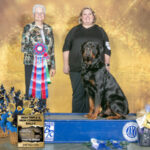
Julianna Rowlett
- rolynveterinary@gmail.com
- 779-260-0769
- Rolyn Veterinary Hosp
- 24542 St. Peters Dr.,Channahon IL 60410
- IL
- Email:rolynveterinary@gmail.com
- Phone:779-260-0769
- Practice:Rolyn Veterinary Hosp
- Address:24542 St. Peters Dr.,Channahon IL 60410
- Location:IL
Julianna Rowlett
I graduated from Ross University in January 2011 and started my veterinary career at a mixed animal practice in a very small rural town of southern Illinois. There I practiced on a wide variety of species with an even wider variety of medical needs. In March 2012, I accepted a position at an AAHA accredited corporate small animal hospital where I practiced for over 10 years, serving as the Medical Director for the last 7 years. Fall of 2022 I opened Rolyn Veterinary LTD offering relief coverage to local small animal hospitals experiencing doctor shortages. December 2022 I began doing dental procedures 1-2 days a week at a low cost surgical center serving the less fortunate by making a significant difference in the quality of life of their beloved pets. In addition to those positions I am an associate DVM at Bristol Veterinary Hospital since January 2023. Bristol Veterinary Hospital in Oswego is conveniently located about 50 miles southwest of Chicago and is currently offering ear cropping of all breeds.
I am currently a member of the AVMA. Society for Theriogenology, American Rottweiler Club and Medallion Rottweiler Club where I serve as a committee member. Personally, I am ardent about breed preservation and promoting dogs who epitomize their breed standard demonstrated by earning titles. I deeply enjoy the antics of my two purebreds, purpose bred Rottweilers who are the definition of well-bred dogs. I am active in the purebred, purpose bred dog world. We compete in conformation, rally, and obedience with both of my dogs: My male has earned
eleven titles (and counting) and my young female has her AKC Grand Championship. This fall I will build a breeding program around this promising young female.
Professionally,
Dr. Julianna Rowlett MS DVM
Rolyn Veterinary
rolynveterinary@gmail.com
Bristol Veterinary Hospital
rowlett@bristolvetclinic.com

Junior Saint Preux
- Jspvetservices@gmail.com
- Relief Work
- Las Vegas, NV
- NV
- Email:Jspvetservices@gmail.com
- Practice:Relief Work
- Address:Las Vegas, NV
- Location:NV
Junior Saint Preux
Dr. Saint Preux is a small animal veterinarian who earned his Bachelor?s in Biological Sciences, from Bethune-Cookman University, and his DVM from Ross University School of Veterinary Medicine. Dr. Saint Preux has a passion for preserving the image of the Doberman breed, public education, and providing gold standard medicine practices for his clientele. After completion of The American Doberman Society ear-cropping scholarship where he has worked alongside Dr. Arn and Dr. Backues, he now performs ear-cropping services at Blue Diamond Animal Hospital in Las Vegas, NV.
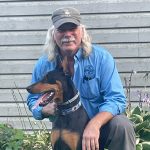
Edward Schoene
- 315-858-2136
- Cherry Valley Veterinary Associates
- 4896 US Hwy 20,Springfield Center, NY 13468
- NY
- Phone:315-858-2136
- Practice:Cherry Valley Veterinary Associates
- Address:4896 US Hwy 20,Springfield Center, NY 13468
- Location:NY
Edward Schoene
I graduated from Michigan State University College of Veterinary Medicine in 1984. I have spent the last 40 years working with dairy producers and cattle in upstate New York.
With a lifelong appreciation of Doberman Pincher?s and many as personal pets I have been associated with many Doberman breeders. It has come to my attention recently that there is a serious need for qualified individuals to crop ears on Dobermans and other breeds. With the help of The Doberman Pincher Club of America I was introduced to a well regarded ear cropping veterinarian and was able to spend many days at her practice learning the art of properly cropping ears.
My intention going forward is to offer this as a service initially in a neighboring small animal practice and eventually to establish a facility to perform ear cropping.
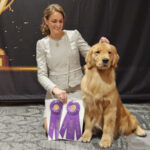
Leeah Schwanger
- 586-752-6217 ext. 148
- Wilson Vet. Hospital
- 12000 Durham,Washington MI 48095
- MI
- Phone:586-752-6217 ext. 148
- Practice:Wilson Vet. Hospital
- Address:12000 Durham,Washington MI 48095
- Location:MI
Leeah Schwanger
Dr. Leeah Schwanger graduated from the University of Tennessee College of Veterinary Medicine and then completed a Theriogenology residency at Virginia-Maryland Regional College of Veterinary Medicine. Dr. Schwanger works at Wilson Veterinary Hospital in Washington, MI and specializes in canine reproduction medicine. She is a member of the AVMA and Society for Theriogenology.
Dr. Schwanger is a member of the Golden Retriever Club of America and has shown, bred, and trained Golden Retrievers since she was a teenager. She has bred over 45 champions and competes in conformation, obedience, rally, and hunt tests. In 2010, her Golden Retriever ?Blue? was the Number 1 Golden Retriever and #11 Sporting Dog. She is passionate about the sport of purebred dogs and dedicated to supporting preservation breeders.
Dr. Schwanger is excited to offer ear cropping at Wilson Veterinary Hospital after training with Dr. Anne Midgarden through the DPCA Crop Externship Program.

Alyssa Shelby
- https://kokopellivet.net/
- 916-683-4029
- Kokopelli Assisted Reproductive Services
- 4325 Auburn Blvd, Suite 100,Sacramento, CA 95841
- CA
- Phone:916-683-4029
- Practice:Kokopelli Assisted Reproductive Services
- Address:4325 Auburn Blvd, Suite 100,Sacramento, CA 95841
- Location:CA
Alyssa Shelby
Dr. Alyssa Shelby DVM was born and raised in central Missouri in a rural community. She earned her B.S. in Animal Sciences in May of 2013 from the University of Missouri. She attended the College of Veterinary Medicine at the University of Missouri and graduated in May 2017 with her DVM. Dr. Shelby?s passion is comparative reproductive medicine (large and small animals). In her free time, she likes to compete in agility, field trials, and conformation with her dogs, ride horses, work with cattle, workout, read, and explore her new home state of California. She currently lives with her husband, who is an MD, and their pets (tortoiseshell cat, Pembroke Welsh Corgi, and Basset Hound). Her goal is to one day become board certified in comparative theriogenology.

Simone Stewart
- 706-324-0333
- Northside Animal Hospital
- 5377 Veterans Pkwy Suite B,Columbus GA 31904
- GA
- Phone:706-324-0333
- Practice:Northside Animal Hospital
- Address:5377 Veterans Pkwy Suite B,Columbus GA 31904
- Location:GA
Simone Stewart
Dr. Simone Stewart is a small animal veterinarian who earned her Bachelor?s in Animal Science, Pre-Vet from Tuskegee University, and her DVM from Tuskegee University College of Veterinary Medicine. She is a recent graduate with a passion for historical dog breeds and practicing the best quality medicine possible. She has been a lover of Dobermans for nearly ten years, and owns her own senior Doberman as well as a number of other dog breeds and farm animals. Dr. Stewart will be offering ear crops at Northside Animal Hospital in Columbus, Georgia.

Marvin Urbanczyk
- 512-259-4200
- Block House Creek Animal Hosp.
- 2200 N. Bell Blvd.,Cedar Park TX 78613
- TX
- Phone:512-259-4200
- Practice:Block House Creek Animal Hosp.
- Address:2200 N. Bell Blvd.,Cedar Park TX 78613
- Location:TX
Marvin Urbanczyk
Doctors Marvin (Buddy) Urbanczyk and Stacy Curl have been practicing veterinary medicine for decades. Their multi-veterinarian practice sees both large and companion animals and has a strong interest in canine reproduction. Dr. Buddy has been performing pet crops since 1985 and has mentored Dr. Curl in the art of ear cropping at their clinic. Their work with preservation breeders has spurred an interest to offer their patient?s ear cropping of both pet and show quality appearance since there is a large demand for these services.
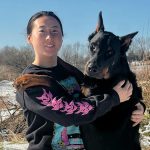
Alice Wang
- Alicewang.8b@gmail.com
- Complete Pet Animal Hospital
- 5135 N Dysart Rd, Litchfield Park AZ 85340
- AZ
- Email:Alicewang.8b@gmail.com
- Practice:Complete Pet Animal Hospital
- Address:5135 N Dysart Rd, Litchfield Park AZ 85340
- Location:AZ
Alice Wang
Dr. Alice Wang is small animal veterinarian who received her Bachelors of Science in Physiology, Neurobiology, and Behavior from UC Davis and went on to complete her Doctor of Veterinary Medicine in 2022 at Midwestern University. Throughout vet school, she competed in various dog sports with her Australian cattle dogs and chihuahua.
After graduating with her DVM, Dr. Wang went to Mississippi State University for an anatomic pathology residency, but ultimately left her second year to practice small animal medicine in central New York. She has a strong interest in surgery, canine reproduction, and behavior. She also currently breeds chihuahuas and cattle dogs. She acquired her first cropped breed, a beauceron, in 2024. Learning how to perform a quality ear crop has always been high on her agenda along with offering breeder-friendly veterinary services. She is grateful for the opportunity to learn from the talented and experienced Dr. Midgarden.
She is excited to offer ear cropping and canine reproductive services to the Southwest region.
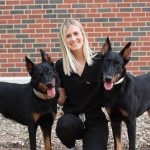
Amanda Winkeljohn
- OK
- Location:OK
Amanda Winkeljohn
My name is Amanda Winkeljohn, and I am a current 4th year veterinary student at Oklahoma State University CVM. I earned my undergraduate degree in Biology from the University of Oklahoma in 2021. I hold special interests in canine sports medicine and radiology, as well as recently completely my TCVM training to be certified in Veterinary Acupuncture through Chi University.
I am an avid owner of Beaucerons (another cropped breed) and have spent many years dedicated to upholding their breeding and standards through work. I am the current Newsletter Chair for the American Beauceron Club, and am a member of the Working Beauceron Association and USMRA. I actively compete in a wide variety of sports with my two Beaucerons but our biggest passions are Mondioring and Disc.
I hope to stay in Oklahoma after graduating and continue learning from my wonderful mentor Dr. Kay Backues. I have been fortunate to be able to learn about different breeds from her already and hope to continue to expand my knowledge base with her guidance.
DPCA Position Statement Ear Cropping & Neonatal procedures, Tail docking and dewclaw removal
Historically, the removal of portions of a dog’s tail, tail dock, removal of the first digit of the forelimb, dewclaw removal, and surgical reduction in size of a dog’s ears so that they stand erect, ear cropping, was performed to help the adult dog perform his job functions with less chance for injuries. These simple and minor procedures prevented more serious, painful and potentially life-threatening injuries such as torn dewclaw or broken tail in an adult dog, where bleeding and or infection could be life threatening. Additionally, injury to the adult tail, ear, or dewclaw could be debilitating to the dog, preventing him from performing his job. Today when performed properly these procedures cause very mild and transient discomfort to puppies of appropriate age with very few reported side effects.
Tail docking and dewclaw removal are typically performed on very young puppies, typically at 3-4 days of age. When performed tail docking and dewclaw removal cause only momentary discomfort and puppies quickly go back to nursing and sleeping with their dam. Serious side effects of tail docking and dewclaw removal are rarely reported by veterinarians or breeders.
Ear cropping of Doberman Pinscher puppies is routinely performed under general anesthesia between 7-12 weeks of age by a licensed veterinarian. Modern anesthesia and analgesia are required. When performed by a veterinarian using modern techniques of surgery and analgesia ear cropping is a minor procedure that puppies recover from quickly and are typically back playing and wrestling with litter mates within 12 hours.
The DPCA believes that these common and minor procedures when performed correctly have very little risk to the puppy and only minor transient discomfort that can be adequately treated by modern veterinary practices and their need is still present for the prevention of injury and maintenance of the breed’s standard appearance.


